Physical Address
304 North Cardinal St.
Dorchester Center, MA 02124
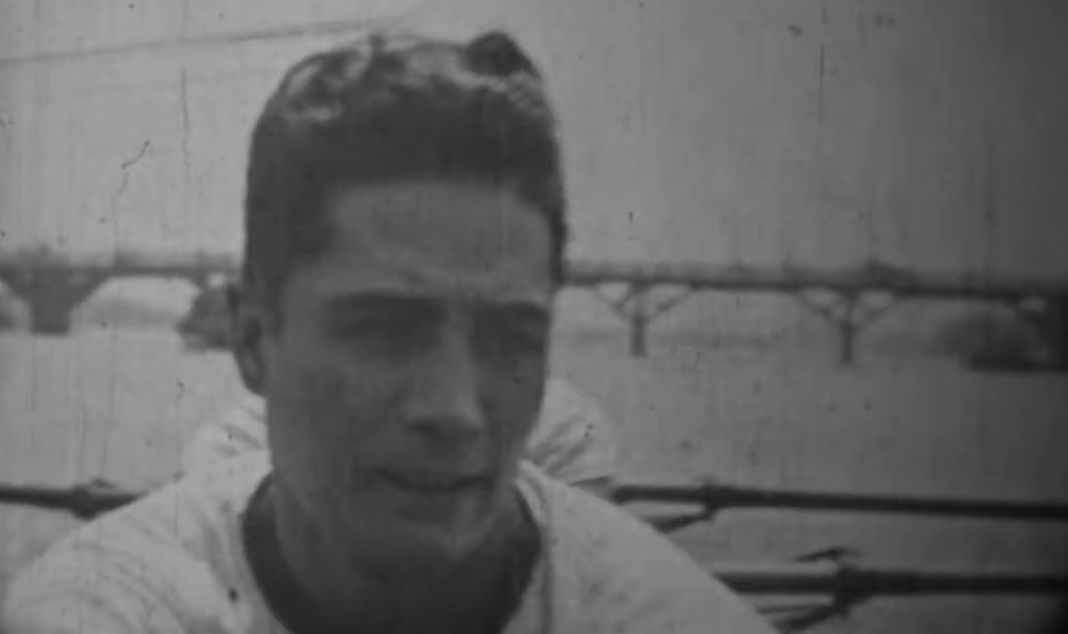
Other titles: The King of Rowing, Rowing King (alternate English titles)
| Production Company | Nikkatsu |
| Scenarist | Yano Yoshiaki |
| Source | Yano Yoshiaki (story) |
| Cinematography | Kiga Yasugō |
| Performers | Hirose Tsunemi (Mochizuki Eiichi, the Rowing King); Natsukawa Shizue (Mitsuko, the Rector’s niece); Kanbe Hikaru (Hayashi, Mochizuki’s friend); Nanbu Shozo (Coach); Mimasu Yutaka (University Rector Tomizawa); Itō Takayo (first spy); Sugai Ichirō (second spy) |
| Status | About 30 percent extant |
| Photography | Black and white |
| Format | 35mm |
| Sound | No |
| English Subtitles | Yes (YouTube version) |
| Original Release Date | June 5, 1927 |
| Length | Currently: approx. 28 minutes; originally: 2154 meters |
Mochizuki Eiichi, who is graduating from high school, was the champion rower on his school’s rowing team. As he leaves after the ceremony, he’s approached by scouts from two universities, University A and University L, both of whom want him to apply as a student to their institutions in order to become part of their respective boat clubs.1 Mochizuki asks the men which college’s rowing team won last year’s annual regatta. The scout from University L proudly declares his institution to be the reigning champion. The young man then chooses, to the older man’s astonishment, to attend University A instead. His best friend Hayashi applies to the same college to join his friend, and both are welcomed by the university with open arms.
One day, Mitsuko, the pretty niece of the rector of University A, decides to go for a walk, and several students, including Mochizuki and Hayashi, observe her in a field singing. She is startled to notice the students and in her confusion drops a book she is holding. Mochizuki picks up the book and tries to return it to her, but she runs away. Later at the boarding house, Hayashi teases Mochizuki about his crush on Mitsuko.
As the rowing competition between the two universities approaches, two well-dressed men from Ginza spy upon University A’s rowing team – for example, by timing the team’s practice runs – in order to sell their information to the rowing team of University L. Hayashi catches these spies red-handed and is beaten and chased up a tree by them. When he calls for help, Mochizuki arrives and beats up the two spies, and the whole University A team captures the two men and dumps them in the water.
Mochizuki receives a letter from Mitsuko inviting him to go out rowing on the Sunday before the big match. The couple enjoys a very pleasant day on the lake, while Hayashi, as a kind of chaperone, follows close behind in another boat. Meanwhile, on the shore, the two spies notice Mochizuki and, unseen by him, take a photo of him and Mitsuko, in which Hayashi and his boat do not appear.
Later, the two spies hatch a plot to use the photo as revenge against Mochizuki. The spies send him a letter in the guise of Mitsuko, inviting him to go out rowing again the next day. When he and Hayashi arrive at the boat house the following day, however, they don’t find Mitsuko, but see pasted on the wall a flyer allegedly from the coach – actually written by the spies – announcing that the team’s final practice before the competition has been called off.
Meanwhile, the spies send another letter to the rector, allegedly from an anonymous student, condemning Mochizuki for missing the final practice to go rowing on the lake unchaperoned with an unknown woman, and demanding that a student of such low caliber as Mochizuki be expelled. He is called into the rector’s office and confronted by the letter and the photo, in which Mitsuko’s face is obscured by her parasol. The coach demands that Mochizuki explain himself and identify the woman in the picture, but though the latter realizes that the woman is Mitsuko, he refuses to name her. Meanwhile, Mitsuko, who’s in the room, assumes that he had gone rowing with another woman. The angry rector expels Mochizuki.
On match day, the rector urges the team, on which Hayashi is now substituting for Mochizuki, to do its best despite the absence of their teammate. Meanwhile, in a field, the two spies tear up their copy of the photo and throw it away, and Mitsuko, sitting nearby, puts the pieces together and realizes that she herself was the woman in the incriminating picture. She returns to the stands to inform her uncle of Mochizuki’s innocence. The rector instructs the coach, just minutes before the race is to start, to put Mochizuki back on the team.
Hayashi locates Mochizuki and informs him that he now has permission to compete. The delighted athlete rushes at top speed – on foot, on horseback and even by motorboat – to his teammates’ boat, and he leads the University A team to victory. Later, Mochizuki and Mitsuko are shown quietly rowing on the lake again, with Hayashi sitting in the boat behind them, as before.
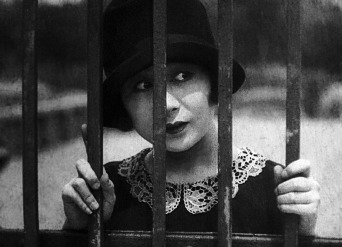
Natsukawa Shizue began her career as a child actor in the seminal film The Glow of Life (Sei no Kagayaki, 1919), directed by pioneering cinema reformer Kaeriyama Norimasa. (Kaeriyama was instrumental in helping to bring about, among other changes, the use of actresses rather than onnagata – professional female impersonators – to portray female characters; thus Natsukawa, despite her youth, was one of Japanese cinema’s first actresses.) She briefly experienced stardom in the late 1920s: her most famous role in this period was probably that of the proletarian girl Michiyo in Mizoguchi Kenji’s “left tendency” (keikō eiga) film Tokyo March (Tōkyō kōshinkyoku, 1929). She later gave a well-received performance as an idealistic doctor in Toyoda Shirō’s award-winning Spring on Leper’s Island (Kojima no haru, 1940). In the early postwar era, she appeared frequently in supporting roles, particularly in movies by Kinoshita Keisuke, e.g., Twenty-Four Eyes (Nijū-shi no hitomi, 1954). She was also memorable in one of her final roles – portraying the legendary aristocrat Taira no Tokuko, who was defeated with the rest of the Taira clan in the Battle of Dan-no-ura – in Kobayashi Masaki’s classic Kwaidan (Kaidan, 1964). Natsukawa died in 1999 at the age of 89.
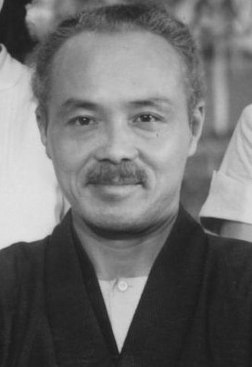
Sugai Ichirō was a prolific character actor who began his career in the mid-1920s, while still in his teens. In the postwar era, he appeared as both sympathetic characters and villains in many notable films by major directors, such as Kurosawa (Stray Dog (Nora inu, 1949)), Mizoguchi (My Love Is Still Burning (Waga koi wa moenu, 1949), The Life of Oharu (Saikaku ichidai onna, 1952) and The Crucified Lovers (Chikamatsu monogatari, 1954)), Shindō Kaneto (Epitome (Shukuzu, 1953)), and Ozu (Early Summer (Bakushū, 1951), in which he played the father of the character played by Ryū Chishū, despite being three years younger than Ryū). By the time he died in 1973, Sugai had appeared in over 300 films.
I hadn’t intended to post this review, having scheduled something else – indeed, I had never even seen The Rowing King previously – but when, to my surprise, the film was suddenly uploaded to YouTube, I watched it immediately and was delighted. I’d assumed I would eventually need to go to Japan to see it. (Our modern world is horrible in many respects, but one major advantage we have over previous eras is the unprecedented availability, in various media, of all sorts of films, including the rarest and most obscure.)
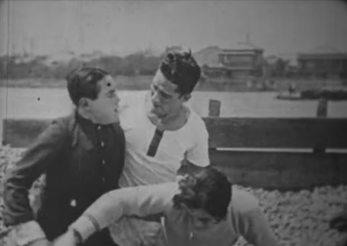
Of all Uchida’s surviving movies, this one – his earliest extant sports comedy – reveals more than any other, even Sweat, the youthful obsession of the director, who was not yet 30 at the time, with Hollywood and all things Western. Indeed, the lame plot, such as it is, could easily have been transposed without major changes to an American setting, with its likable but none-too-bright athlete hero played, perhaps, by Harold Lloyd.
For Asian filmmakers of this era, sports were an important element of modernity, and thus something to be celebrated. In the 1934 Chinese movie Sports Queen by Sun Yu (also available on YouTube), the protagonist, a female athlete (Li Lily), is presented as a heroine of prewar China. It’s very interesting that in this Chinese film, despite that country experiencing much the same tensions between the traditional and the modern as did Japan during the same period, it is a woman who is depicted as exemplary, a champion. However, in Uchida’s film, the patriarchal norm is strongly and uncritically upheld. For example, the sweet but weak heroine, Mitsuko, is identified not as an athlete or even a student, but as a mere relative of the university’s rector, and she solves the mystery of the photo purely by chance, rather than through any active detective work of her own.
The film is obviously intended to be a comedy, but little of it is genuinely funny. (For me, the most amusing thing in it is the hero’s disrespectful treatment of his nerdy, bespectacled best friend, Hayashi.) The big race that serves as the narrative’s climax isn’t truly suspenseful, either, since we already know in our hearts, as we would while watching a similar Hollywood picture of the day, that everything will end well. So what exactly makes this movie, with its tired, unsurprising plot and clichéd characters, feel so fresh, so fun?
I believe the key to the film’s charm is its breezy tone; that, and Uchida’s love of speed and of the medium of cinema precisely for its ability to convey speed. In the late 1910s and early 1920s, there emerged a faction of movie lovers, called the Pure Film Movement (jun’eigageki undō), which argued that Japanese cinema should cease to imitate the traditional performing arts of Japan, but should derive both its narrative style and its techniques from the best Western films.
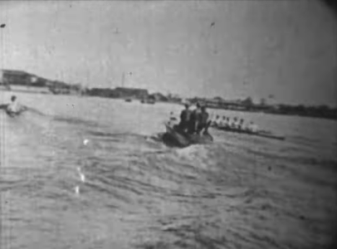
Though generalizations are risky, it’s safe to say that traditional Japanese theatrical performance styles, even of dramas set in modern times, depended at the time largely upon effects of slowness and stillness. In this film and others of the period, therefore, Uchida shows himself to be an ally of the movement in his disregard for such traditional effects and his embrace of dynamic staging and editing. In so doing, he privileges youth and its strength and energy over the claims of age. (Note that both older authority figures in the film, the rector and the coach, are dead wrong about Mochizuki.) Uchida’s use of exciting footage he shot of an actual boat race2 adds to our sense of the film’s embrace of the modern.
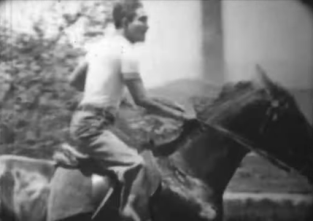
Therefore, the best scene in the movie by far is the climax, in which Mochizuki, informed by Hayashi that he’s been reinstated, rushes to rejoin his teammates. He at first runs at impressive speed down a country path, but that isn’t quick enough, and soon he’s seen galloping on horseback – it’s never explained where he found the horse or how he requisitioned it – and then, when even that mode of transport proves insufficiently fast, he dives into the river so a passing motorboat can tow him the rest of the distance.
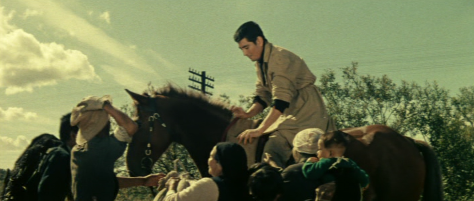
The well-edited shots in which Mochizuki rides the horse are particularly interesting, because they pleasantly presage shots of the mounted Ainu hero Kazamori (alias Byakki, “the Phoenix”) in Uchida’s 1958 social-problem drama, The Outsiders (Mori to mizuumi no matsuri). Both films, of course, pay homage to the Hollywood Western and the iconic image of the lone hero on horseback, seeking justice.
On the evidence of this film and his earliest works from 1925 – the animated Tale of Crab Temple (Kaniman-ji Engi) and Moving Tales of Youth: The Pure Heart (Shonen bidan: Kiyoki kokoro) – as well as the later Sweat, we can definitely say that Uchida did not begin his career with anything resembling a tragic sense of life. That feeling for the tragic would gradually be acquired through hard experience (including a turbulent decade in China), and would culminate in such postwar masterpieces as Hero of the Red-Light District (Yōtō monogatari: hana no Yoshiwara hyakunin-giri) and A Fugitive from the Past (Kiga Kaikyō, 1965). Through that gradual evolution, Uchida would gain immeasurably as an artist. But he would also, necessarily, lose something precious: his youthful spontaneity and sense of fun. And it’s the knowledge of the fragility of these qualities, within the context of the filmmaker’s career, that gives The Rowing King its subtle but real poignancy.3
Despite its trite story and characters, this early brief fragment by Uchida is very entertaining and surprisingly satisfying.4
Japanese Movie Data Base (jmdb) – Credits for the film (in Japanese)
National Film Archive of Japan (NFAJ) – Credits for and information about the film (in Japanese)
Nikkatsu Studios – web page referencing this movie
YouTube version